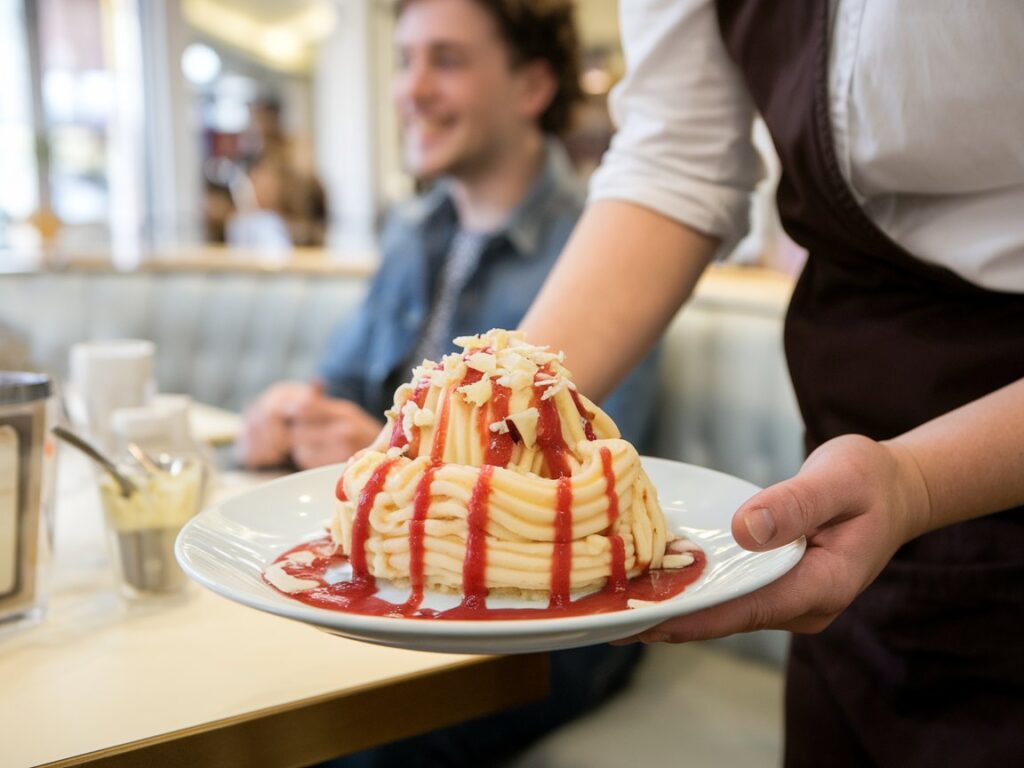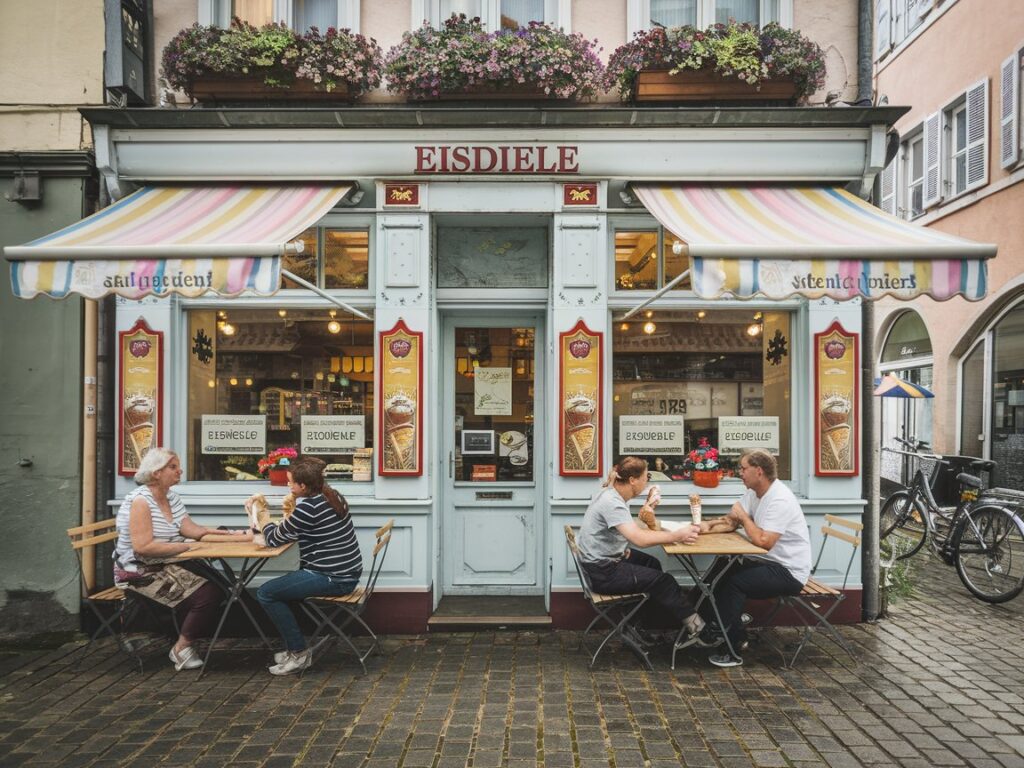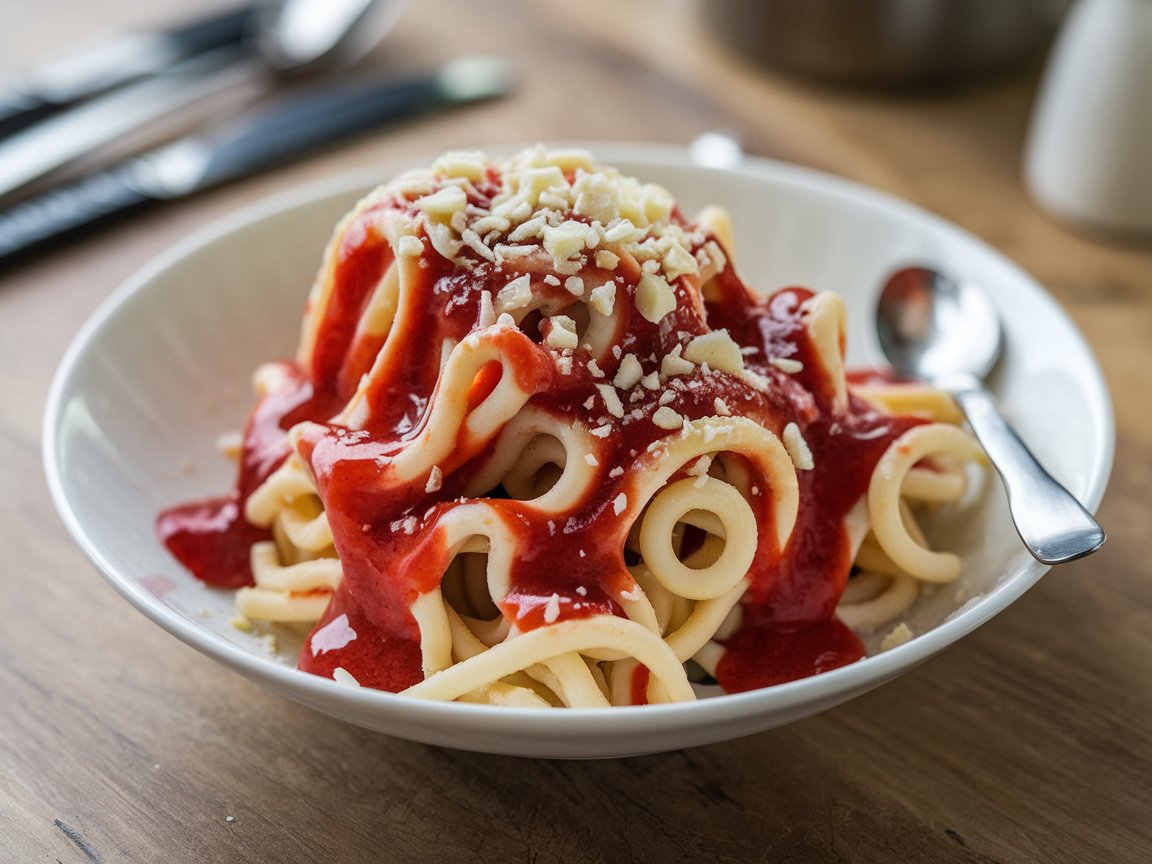German ice cream is loved for its creamy texture, rich flavors, and unique traditions. If you’ve ever been to Germany, you might have noticed how much Germans enjoy their “Eis,” which is the German word for ice cream. But German ice cream is more than just a dessert—it’s a cultural experience. From classic flavors to fun creations like Spaghettieis, it has something special that sets it apart from ice cream in other countries.
This article will explore what German ice cream is called, its history, unique characteristics, and why it’s so popular worldwide. Whether you’re a food lover or just curious, you’ll learn everything you need to know about this delightful treat.
What Makes German Ice Cream Unique?
German ice cream, or “Eis,” is known for its high-quality ingredients, carefully crafted flavors, and creative presentation. One of its standout features is Spaghettieis, a dessert that looks like spaghetti but is made entirely of ice cream. This playful approach to dessert is a favorite in German ice cream parlors, also known as “Eisdielen.”
Another unique aspect is the variety of flavors. While Germans enjoy classics like vanilla and chocolate, they also experiment with local ingredients like hazelnut, black currant, and even beer flavors! Unlike many other countries, German ice cream often uses less sugar, focusing on creamy textures and natural flavors.
History of German Ice Cream
Ice cream became popular in Germany in the 19th century, thanks to Italian immigrants who introduced their gelato-making skills. Many opened “Eisdielen” (ice cream parlors), blending Italian methods with local German ingredients.
By the 20th century, ice cream was a staple in German desserts. A major innovation came in the 1960s with Spaghettieis, a creative dessert made to resemble spaghetti using vanilla ice cream, strawberry sauce, and white chocolate. Today, this playful creation symbolizes German ice cream culture.
Characteristics of German Ice Cream
- Creamy and Smooth
German ice cream, or “Eis,” is known for its silky texture, achieved using fresh cream and less air. - Less Sweet, More Natural
It’s less sugary than some ice creams, letting flavors like hazelnut or pistachio stand out. - Seasonal Flavors
Germans use fresh, local ingredients, offering flavors like rhubarb in summer and walnut in winter. - Creative Styles
From Spaghettieis to fruit-topped bowls, presentation is key in German ice cream.
Popular Names for German Ice Cream
German ice cream, or “Eis,” comes in various unique forms and flavors that reflect the country’s creativity and love for desserts. Here are some of the most popular names and styles:
1. Spaghettieis
This is Germany’s most iconic ice cream creation. Designed to look like a plate of spaghetti, it features vanilla ice cream pressed through a machine to resemble noodles, topped with strawberry sauce (tomato sauce) and white chocolate shavings (parmesan).
2. Eiskaffee
A delightful blend of ice cream and coffee, Eiskaffee is a classic German treat. It typically consists of vanilla ice cream served in a glass of chilled coffee, topped with whipped cream.
3. Fürst Pückler Eis (Neapolitan Ice Cream)
Named after a 19th-century nobleman, Fürst Pückler Eis features three flavors layered together—chocolate, strawberry, and vanilla. This is Germany’s version of Neapolitan ice cream.
4. Eisbecher
An “Eisbecher” (ice cream sundae) is a popular choice in German parlors. It’s a bowl of ice cream loaded with toppings like whipped cream, fruits, sauces, and sprinkles. Each parlor offers unique variations, making it a fun and customizable treat.
5. Stracciatella Eis
A beloved flavor in Germany, Stracciatella combines creamy vanilla ice cream with fine chocolate shavings. This flavor originated in Italy but has become a favorite in German parlors.
6. Regional Specialties
Certain areas in Germany boast unique ice cream flavors inspired by local ingredients, such as black currant in Bavaria or marzipan in Lübeck.
7. Softeis (Soft Serve)
Softeis is Germany’s version of soft-serve ice cream, often sold at fairs and markets. Its light texture and variety of toppings make it a fun street-food option.
Famous German Ice Cream Flavors

German ice cream flavors are a delightful blend of timeless classics and unique creations inspired by the country’s rich culinary traditions. From simple yet beloved options like vanilla and chocolate to regional favorites like hazelnut and black currant, German Eis offers something for every palate. Innovative flavors like marzipan, pistachio, and cinnamon further showcase Germany’s creativity, making its frozen desserts a true standout:
1. Vanilla (Vanille)
Vanilla is a classic favorite in Germany, just like in many other countries. Its creamy texture and subtle flavor make it a top choice, often paired with other desserts like apple strudel.
2. Chocolate (Schokolade)
Rich and indulgent, chocolate ice cream is a staple in German parlors. Some shops offer dark chocolate variations for an extra decadent taste.
3. Hazelnut (Haselnuss)
Hazelnut ice cream is uniquely popular in Germany, thanks to its nutty, creamy flavor. It’s a perfect example of Germans’ love for natural and earthy ingredients.
4. Black Currant (Schwarze Johannisbeere)
This tart and fruity flavor stands out as a regional specialty, especially in southern Germany. It’s a refreshing choice during warmer months.
5. Stracciatella
A combination of creamy vanilla ice cream and fine chocolate shavings, Stracciatella is one of the most loved flavors in German “Eisdielen.”
6. Pistachio (Pistazie)
Pistachio ice cream offers a rich, nutty flavor and vibrant green color, making it a visually and flavorfully appealing choice.
7. Fruit Sorbets
In addition to traditional ice cream, Germans enjoy fruit-based sorbets made from strawberries, raspberries, or lemon. These lighter options are especially popular in summer.
8. Unique Flavors
Some parlors experiment with flavors inspired by German cuisine, such as marzipan, cinnamon, or even beer ice cream. These innovative options cater to adventurous eaters looking for something new.
Whether you prefer simple classics or exciting new tastes, German ice cream flavors offer something for everyone.
Differences Between German Ice Cream and Gelato
Although German ice cream (“Eis”) and Italian gelato share some similarities, they differ in key ways. These differences highlight the unique characteristics of each dessert:
- Ingredients
German ice cream uses cream, milk, sugar, and sometimes eggs, with less sugar for a natural flavor. Gelato uses more milk, less cream, and rarely eggs, making it lighter. - Texture and Air Content
German ice cream is fluffier with more air, while gelato is denser with less air, offering a richer texture. - Temperature
German ice cream is served colder for a firmer consistency, whereas gelato is served warmer and softer. - Flavors
German ice cream offers creative options like Spaghettieis and hazelnut, while gelato focuses on traditional flavors like pistachio and chocolate. - Presentation
German ice cream is playful, featuring elaborate sundaes, while gelato is simply displayed in flat, colorful pans. - Culture
German ice cream is a casual treat, while gelato reflects Italy’s artisanal heritage.
Both are delicious, but German ice cream stands out for its lighter, fun style compared to gelato’s dense, rich appeal.
You Might Also Like
If you enjoyed learning about German ice cream, you might also love exploring other unique and delicious treats. Discover the surprising twist of Bolognese Ice Cream, a creative dessert that’s sure to impress with its playful presentation. For a taste of luxury, don’t miss the Dubai Pistachio Chocolate Bar, a rich and indulgent sweet that combines nutty pistachio with silky chocolate. And for a classic dessert with a fruity touch, try the Peach Crumble Recipe, a warm, comforting dish that’s perfect for any occasion.

FAQs
1. What is German ice cream called?
German ice cream is called “Eis,” which simply means ice cream in German. It’s known for its creamy texture, rich flavors, and fun presentations like Spaghettieis.
2. What makes Spaghettieis special?
Spaghettieis is a playful German dessert where vanilla ice cream is shaped like spaghetti, topped with strawberry sauce (resembling tomato sauce) and white chocolate shavings (like parmesan cheese).
3. How is German ice cream different from gelato?
German ice cream is fluffier and served colder, while gelato is denser and creamier due to less air. German ice cream also features creative presentations and unique local flavors.
4. Is German ice cream healthier?
German ice cream often contains less sugar than other varieties, focusing more on natural flavors and high-quality ingredients.
5. Can you make Spaghettieis at home?
Yes! All you need is vanilla ice cream, strawberry sauce, and white chocolate. Use a potato ricer or Spaghettieis press to shape the ice cream into noodles for a fun presentation.
6. Where can I try authentic German ice cream?
You can find authentic German ice cream in Germany’s many “Eisdielen” (ice cream parlors) or specialty dessert shops. Some international shops may also offer German-style ice cream.
Conclusion
German-style frozen desserts hold a special place in Germany’s culinary traditions. They are not just sweet treats but reflections of creativity and heritage. What sets them apart is the focus on high-quality ingredients and artistic presentation. The German commitment to using fresh cream, milk, and locally sourced components ensures every bite is rich in flavor and texture.
One of the most iconic creations is Spaghettieis. This playful dessert mimics a plate of spaghetti, with vanilla dessert pressed through a special machine to create noodle-like strands. Topped with strawberry sauce and white chocolate shavings, it is as fun to look at as it is delicious to eat. Similarly, classics like Eiskaffee, a refreshing blend of frozen vanilla and chilled coffee, offer a perfect balance of simplicity and indulgence.
Regional options further highlight the diversity of German treats. Popular choices include hazelnut, pistachio, and black currant, each reflecting the local palate and seasonal ingredients. Many dessert parlors experiment with unique combinations, introducing flavors like marzipan, cinnamon, or even beer. This variety makes these frozen delights an adventure for the taste buds.
The experience of enjoying frozen treats is just as important as the dessert itself. In Germany, an outing to a dessert parlor is a cherished tradition for families, friends, and tourists alike. These parlors often serve their desserts in beautifully crafted sundaes, adorned with whipped cream, fruits, and decorative toppings.
Whether you’re savoring a scoop of creamy hazelnut or indulging in the whimsical Spaghettieis, these German desserts offer something special for everyone. Their perfect blend of flavor, creativity, and tradition ensures they remain beloved treats that transcend generations and borders. Next time you’re in Germany, don’t miss the opportunity to enjoy this delightful experience!

